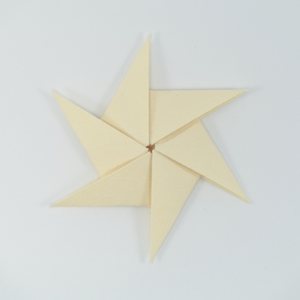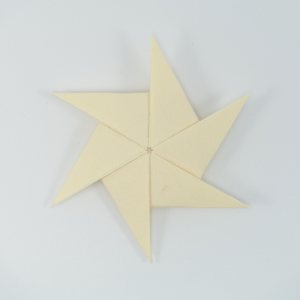Windmill (CFW 84)


This is probably the simplest among Shuzo Fujimoto’s stars derived from decorated hex twists. Fujimoto usually listed it as the first decorated variant, right after Basic Form of Twist Origami (CFW 83), which is just a bare hex twist. Since it is the simplest, he often used it to demonstrate more general ideas that can be applied to other such modified twists as well. Often, he just showed the variant of a model using CFW 84 as a component, and only mentioned (or assumed readers would come up with it) the possibility of using other decorations in its place. In this vein, pretty much everywhere the only variant of Handle (CFW 133) shown or mentioned is the one with the Windmill in the middle, but Twist Origami I contains pictures of other variants as well. Dahlia (CFW 144) goes even further, and variants using different molecules in the center are not even shown in drawings, but only mentioned in text. Technically, pretty much anywhere a Windmill (CFW 84) molecule can be folded, other simple modifications of the hex twist, can be folded as well.
Comments